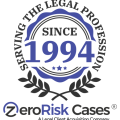Broken bones and fractures after a car accident are painful and debilitating injuries. Immediate medical attention is necessary as is seeing the right specialist afterwards to help you make the best recovery possible and receive the proper treatment.
What are broken bones and fractures after a car accident?
They are injuries that occur when the force or trauma of a car accident cause there to be a break or interruption in the continuity of the bone.
Symptoms
Seek medical attention immediately if you are experiencing any of the following symptoms after a car accident:
- Sudden pain
- Trouble using or moving the injured area or nearby joints
- Inability to bear weight
- Swelling
- Deformity
- Bruising
- Redness
Where in the body can these injuries occur?
Michigan auto accident victims frequently suffer breaks to their spinal bones (i.e., the vertebrae in their spines). Additionally, it is common for victims to suffer broken bones and fractures after a car accident in their arms, legs, shoulders and pelvic areas.
What types of break can occur in the spine?
There are five types of breakage that can occur in the vertebrae of the spine that auto accident victims should know about:
- Compression fracture: The front (anterior) of a vertebra breaks and loses height, but the back (anterior) part of the vertebrae does not
- Axial burst fracture: A broken vertebrae loses height in the front and back
- Flexion/distraction (chance) fracture: The vertebrae of the spine are literally pulled apart (distraction), which frequently occurs as a result of a head-on car crash in which the upper body is thrown forward while the pelvis is stabilized by a lap seat belt
- Transverse process fracture: This type of vertebral fracture results from rotation or extreme sideways (lateral) bending
- Fracture-dislocation: This is an unstable personal injury involving bone and/or soft tissue in which one vertebra may move off of the adjacent vertebra, thereby creating a displacement
The three main areas of the spine are the cervical spine, lumbar spine and thoracic spine.
What type of breakage can occur in the arms?
The breakage that can occur in the arms that crash victims most commonly suffer include:
- Open (compound) fracture: The bone pierces the skin
- Closed fracture: The skin is not pierced by the bone
- Displaced fracture: The bone fragments are not aligned at the site of the break or fracture
- Comminuted fracture: The bone breaks into several pieces
The arm bones most commonly affected by breaks and fractures include: (1) humerus (connects elbow to shoulder); (2) radius (connects elbow to wrist above thumb); and (3) ulna (connects elbow to wrist above pinky finger).
What type of breakage can occur in the legs?
The most common breaks that occur in the legs include:
- Open (compound) fracture: The bone pierces the skin
- Closed fracture: The skin is not pierced by the bone
- Incomplete fracture: The bone cracked but did not completely break into two parts
- Complete fracture: The bone makes a clean break into two parts
- Displaced fracture: The bone fragments are not aligned at the site of the break or fracture
- Comminuted fracture: The bone breaks into several pieces
The legs bones most commonly affected by breaks and fractures include: (1) femur (thighbone); (2) tibia (shinbone); and (3) fibula (runs parallel to the tibia).
How do doctors diagnose broken bones and fractures after a car accident?
To identify and diagnose your broken bones and fractures after a car accident, your doctor will likely order one or more of the following diagnostic imaging tests: X-Ray, MRI and/or CT scan.
These tests will allow your doctor to determine the extent of the break, pinpoint its exact location, and determine the extent of injury.
Is surgery ever a treatment option?
Even though a person’s treatment options may include splinting, casts, medicine and/or traction, surgical is a possible and common treatment. The different surgical options include:
- Fusion – Fusing or joining two vertebrae to stop painful movement
- Vertebroplasty – Inject bone cement into compressed or fractured vertebrae
- Implant artificial discs between injured discs – Provides stability and eliminates pain
- Fixation – For arm and leg fractures, surgery into the area of the broken bone may be necessary to implant fixation devices, such as wires, plates, nails or screws whose purpose is to maintain proper alignment during the healing process
What to do for broken bones and fractures after a car accident?
If you have suffered broken bones and fractures after a car accident, follow these steps:
- Get treatment as soon as possible. When it comes to treating these injuries, the sooner a person begins treatment, the better the chances are that they will make a full functional recovery and prevent further disruption to their lives. As a personal injury lawyer, I always advise people that the sooner they can get the necessary and appropriate medical care, the sooner they can get back on the road to good health and hopefully to a good recovery.
- Get a referral to an orthopedist and/or orthopedic surgeon. A doctor can’t treat you properly until he or she knows what is causing your stress and anxiety.
- Early documentation of broken bones and fractures after a car accident will make it easier for you to avoid future potential problems with your own insurance company or health care provider. Early medical documentation will establish a temporal connection to prove to a health insurance company or a No-Fault insurance company that your motor vehicle crash was the most likely cause of your injuries. Documenting your symptoms early on can also help you to avoid many of the problems that arise when an insurance company later might try to deny a causal relationship and refuse to pay for medical treatment. Putting it another way, if there is a large gap of time that passes before your injuries are documented, then it is easier for your insurance company to question whether the motor vehicle crash you were involved in was the cause of your condition. Early treatment helps you get better faster, and early medical documentation creates the clear temporal causal relationship that insurance companies will be looking for when they are being asked to pay for necessary medical care.
- Showing a clear temporal relationship between the motor vehicle crash and documentation of when your injuries were reported, diagnosed and treated also makes it easier for your lawyer to obtain a full and fair legal settlement for your injuries. Delays in treatment and long gaps in medical documentation will hurt your ability to get better faster and to make a good recovery for your injury. Often, it also makes it harder for your attorney to get a reluctant and cynical insurance company adjuster to pay for your treatment and to pay for a full and fair legal settlement after your crash for your pain and suffering if weeks or months have passed before there is any documentation in the medical records.
- Talk to an experienced injury attorney who has helped people with broken bones and fractures after a car accident and who knows the medicine and what these cases can be worth. A lawyer who focuses on automobile crashes and who has extensive experience litigating motor vehicle crash cases can get you the help you need, including a settlement that reflects the full value of your injuries. An attorney can help you to make sure your bills are getting paid and that your vehicle crash settlement reflects the full measure of the harms and losses you will face.
- Tell your auto insurance company about your broken bones and fractures after a car accident. If you live in Michigan, make sure to include this (and any other injuries you suffered and/or symptoms you are experiencing) in your application for No-Fault benefits, which is also referred to as your “written notice of injury” – which must be given to your No-Fault auto insurance company “within 1 year after the accident.” (MCL 500.3145(1) and (4))
- Do not sign any settlements, releases, or waivers related to your automobile crash: Until you have talked with an experienced attorney who is looking out for your interests, do not sign any settlements, releases, or waivers that are presented to you by your auto insurance company, the at-fault driver’s auto insurer or any other insurance companies or persons.
How to make a legal claim for broken bones and fractures after a car accident?
In Michigan, you start your claim for broken bones and fractures after a car accident by filing an application for No-Fault benefits with the responsible auto insurance company, according to the No-Fault law’s “priority” rules. The No-Fault insurer will pay for your medical bills and your lost wages if you cannot return to work.
Can I file a lawsuit for broken bones and fractures after a car accident?
Yes. You can file a lawsuit against the at-fault driver to sue for pain and suffering compensation as a result of your broken bones and fractures after a car accident, but you will first have to show that the other driver was at-fault for causing the motor vehicle crash and that your injury constitutes a “serious impairment of body function” under Michigan’s auto law.
Additionally, you may be able to sue the at-fault driver for other economic damages, such as excess and future medical bills and lost wages.
Finally, if your own No-Fault auto insurance company refuses to pay for – or even tries to cut-off – your auto No-Fault insurance benefits related to your medical treatment and care or wage loss for your broken bones and fractures after a car accident, then you can also file a lawsuit to sue for unpaid, overdue medical bills, attendant care, medical mileage, replacement services and lost wages because your injury has prevented you from returning to work.
Broken bones and fractures compensation after a car accident
Your broken bones and fractures compensation after a car accident will take several forms. If you have suffered a “serious impairment of body function,” then you can sue the at-fault driver for pain and suffering compensation. Additionally, you may be able to sue for “excess” lost wages and medical bills.
The at-fault driver who caused your automobile crash can be held liable to pay for your lost wages over and above the monthly maximum and/or beyond the three-year limit on No-Fault wage loss benefits. Additionally, the at-fault driver can be sued and forced to pay for your medical bills that exceed and, thus, are not covered by No-Fault PIP medical benefits coverage level in your auto insurance policy.
Need help finding the right lawyer? Call Michigan Auto Law first
If you have suffered broken bones and fractures after a car accident and would like to speak with an experienced injury attorney, call toll free anytime 24/7 at (248) 353-7575 for a free consultation with one of our attorneys. You can also get help from an experienced accident attorney by visiting our contact page or you can use the chat feature on our website.




